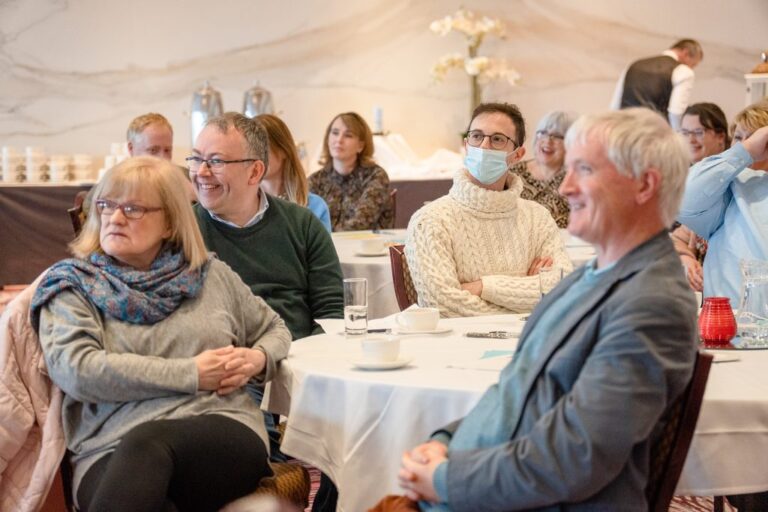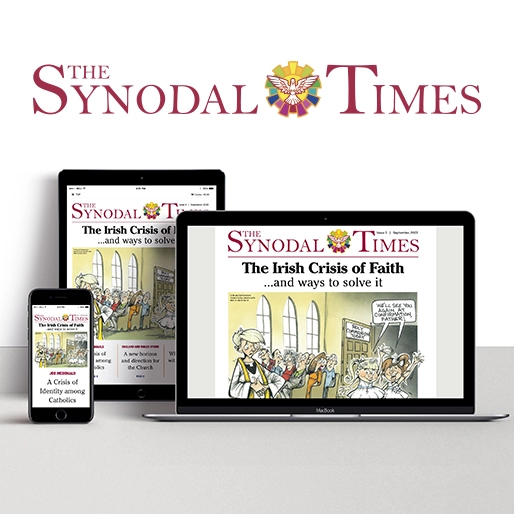Scotland wasn’t bursting out the blocks when it came to the Synod. We were still trying to figure out who if anyone was coming back to Church after Coronavirus, still waiting for a new Archbishop of Glasgow after the tragic death of the late Philip Tartaglia. and thanks to the long aftermath of the Cardinal O’Brien affair the hierarchy here is inclined to caution.
When it got going though, it was the main topic of conversation in Church circles through Spring into Summer. There are those who hate it, those who love it, and the majority in the middle who were happy enough to have their say, but willing to wait and see what comes of it.
While discussions clearly ranged widely reading through the diocesan reports there were three key themes that were very close to universal.
Firstly the role of women in the Church, and a sense they were not appreciated enough, valued enough, or offered the chance to lead.
Secondly, the lack of young Catholics was a sorrow felt everywhere. People know the average age in the pews is nearly pensionable and wish it wasn’t.
Finally, there is a hunger for a better and deeper understanding of the Faith, for all Catholics so they then might communicate it to the world. The desire to explain Catholicism and justify why a person is Catholic, particularly online, is strong. Confidence that they have the ability and knowledge to do so is near nonexistent.
Archdiocese of Glasgow
Scotland’s biggest city, with a large Catholic population, mostly of Irish descent. Traditionally the largest diocese in the country, but has seen a rapid decline in recent years. The Archdiocese of Glasgow’s synod report called for ‘discussing the possibilities of further married clergy’ and more participation for women in the Church. “The principles which the process of synodality particularly promote and encourage are those of co-responsibility, inclusion, and open-mindedness,” the document states. Suggestions for how the Church could be more active include: emphasising inclusivity; more interaction with other religions and denominations; more opportunities for lay contributions; and addressing the decline in church attendance and the rising average age of priests. It also recomends utilising young people’s interests in environmentalism to foster a deeper relationship with the Faith.
Archdiocese of St Andrews and Edinburgh
Whereas its counterpart on the west coast is just the city, this archdiocese stretches from St Andrews on the Fife Coast, down to the Borders. Within the capital itself, there have long been tensions between young traditionalists and older liberals and the synodal report suggested that there is a cultural divide between older Catholics who are more liberal and younger Catholics who are more conservative. The report also suggested that ‘those who expressed disagreement or reservations about some of the Church’s teachings very often were not engaging with the Church’s actual teaching,’ instead engaging with ‘negative stereotypes or even caricatures of the Church’s teaching.’
The document also states that ‘the consensus seemed to be that there should be a place for a variety of forms of worship,’ and that the Traditional Latin Mass and the Novus Ordo should be celebrated reverently and ‘warmly embraced.’
Diocese of Aberdeen
This diocese covers the North East of Scotland, where Catholics are traditionally few and far between and a key theme here was the difficulty of living Christianity in a secular culture. “It is a common experience for Catholics – old and young, clergy and laity – to meet with hostility in schools, workplaces, and elsewhere, or to be ridiculed for practising their Faith,” the report states. In addition, increased emphasis on safeguarding following clergy abuse scandals was ‘a move in the right direction, but more must be done to support those who have been abused and to purge this grave evil from the Church’.
Diocese of Motherwell
Since the pandemic, the diocese of Motherwell has overtaken Glasgow to become the largest diocese by Sunday Mass attendance. In the former mining towns of Lanarkshire the Church is still bound into these tight-knit communities in a way that’s rare elsewhere. Their synod report calls for a Church where ‘everyone has an equal place irrespective of gender, sexual orientation, or age.’ The report’s conclusion states that ‘a certain unity of mind and vision for the Church’ was evident from the responses. “It is of a welcoming and inclusive Church where everyone has an equal place irrespective of gender, sexual orientation, or age,” it states. The report goes on to say the vision expressed in the synodal process in Motherwell is of a Church where ‘clericalism will gradually wither as authority and decision-making are seen to belong to the whole People of God’.
Diocese of Paisley
Geographically the smallest Scottish diocese, Paisley stretches west from the southern suburbs of Glasgow out to the Inverclyde coast. It’s report calls on the Catholic Church at parish, diocesan, national, and international levels to engage more with society, especially in communicating the work and beliefs of the Church. It also states the Church should be more open to change, particularly in recognising and enabling fuller participation of the lay faithful at all levels. One submission called on the Church to ‘listen to what people actually want’ instead of telling people ‘what we must do’.
Diocese of Galloway
Covering the South West of Scotland Galloway is seen as the most liberal diocese but has also faced a steep decline having recently ordained its first priest for 14 years. Its report says that ‘overwhelmingly, the opportunity to participate in the Synod was seen as positive’. It says there was a great hunger for Churches to be a place where all are ‘safe to speak out without fear of judgement, which they felt would enable them to speak out more confidently and courageously’. It also noted that many in the ‘older generation felt that they have been conditioned to be silent, partly due to having been raised not to speak out, and partly due to cultural sectarianism which has created a “keep your head down” mentality among Catholics.’
Diocese of Dunkeld
Centred in Dundee and covering the rolling hills of Perthshire and central Scotland one strong theme here was ‘a distinct concern about the lack of young people and families attending Church services. Parents spoke of real sadness that their children no longer go to Mass and have walked away from the Church. The report states that some were of the opinion that the Church’s attitude to gender equality, and to gay people were examples of how out-of-step it is with the attitudes of young people’.
Diocese of Argyll and The Isles
This is where the Scottish roots of Celtic Christianity are found, on the isle of Iona and the Catholic parts of the Hebrides. They noted the ‘strong bond’ of kinship in island communities that goes beyond Faith. Participants praised the community and prayer of those of varying Faiths as a ‘powerful sign of walking together. However the language of the synod was seen as inaccessible to some participants



